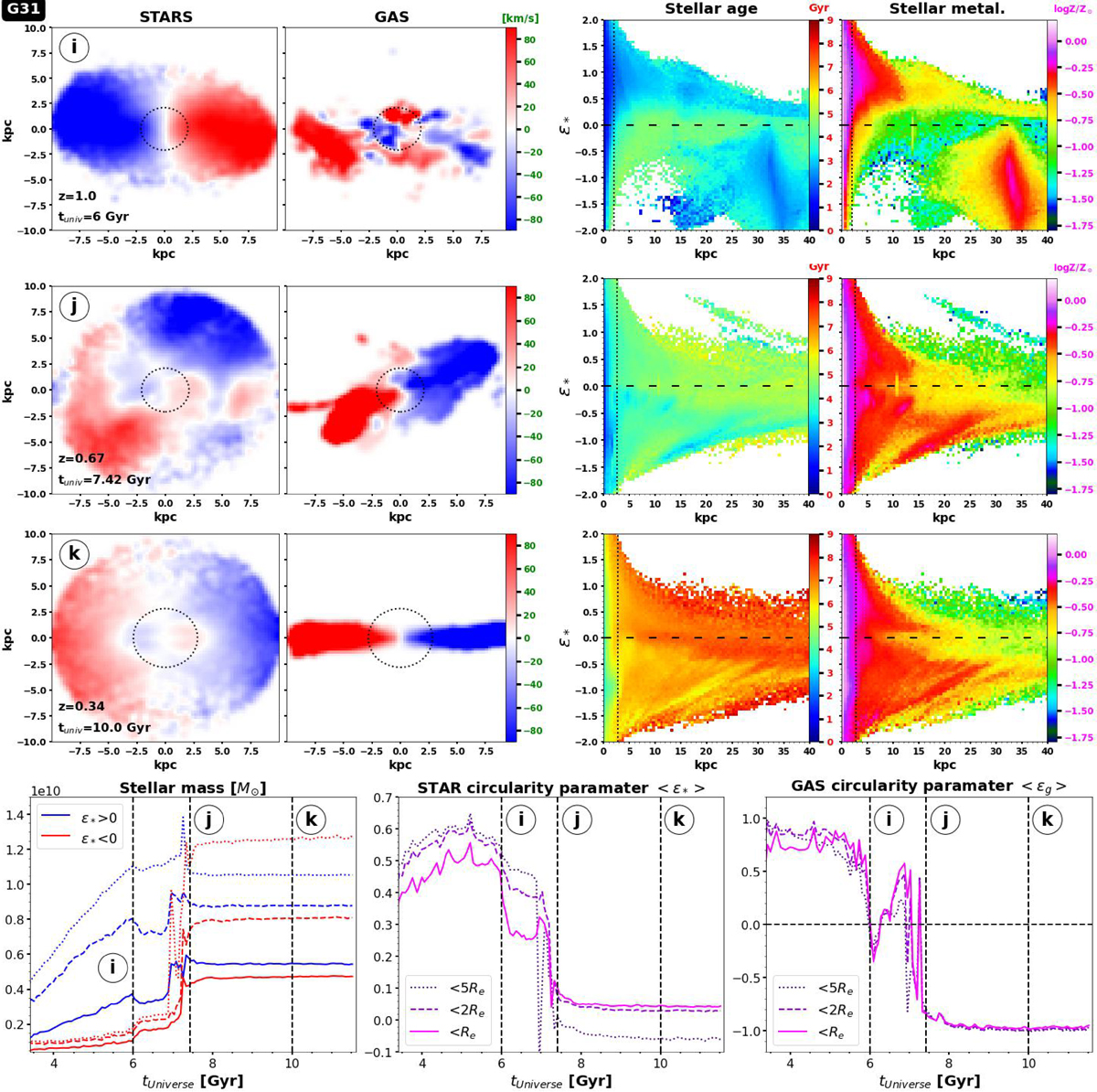Fig. A.5.

Download original image
Same as Fig. 5 but for G31. Before the final plunge (TUniverse∼7.1 Gyr), the gas velocity field is perturbed by the accretion of gas from tidal stripping. Right after the final plunge, epoch &#Xtextcircled;j, two stellar components can be identified: in the inner part, the original stars from the host galaxy G31 and in the outer part, the star originated from the satellite galaxy, which are displayed due to the orbital AM. When the satellite is passing by the pericentric distance, the tidal disruption of the process lead to the formation of stellar streams clearly visible in the ϵ∗-r-age and ϵ∗-r-metal diagrams. We note that the misalignment between the two stellar components at epoch &#Xtextcircled;j is due to the orbital configuration of the major merger. Interestingly, this misalignment seems to weaken in the time, as seen in epoch &#Xtextcircled;k. It is also remarkable that at this epoch, three distinct populations of stars can be identified: the main stellar component in the middle and two counter-rotating stellar components, in the very inner parts (stars formed in situ) and in the outer parts (accreted stars).
Current usage metrics show cumulative count of Article Views (full-text article views including HTML views, PDF and ePub downloads, according to the available data) and Abstracts Views on Vision4Press platform.
Data correspond to usage on the plateform after 2015. The current usage metrics is available 48-96 hours after online publication and is updated daily on week days.
Initial download of the metrics may take a while.


